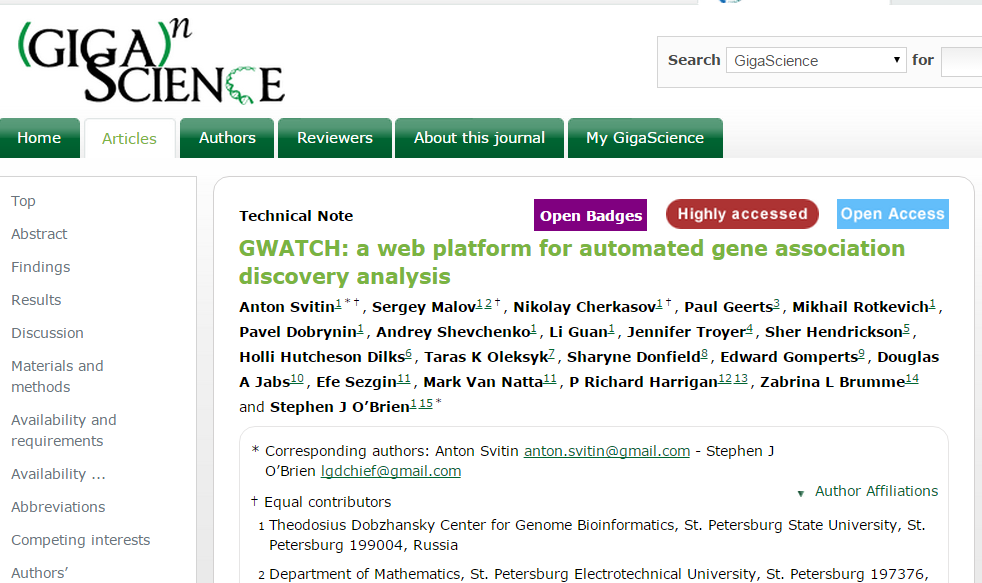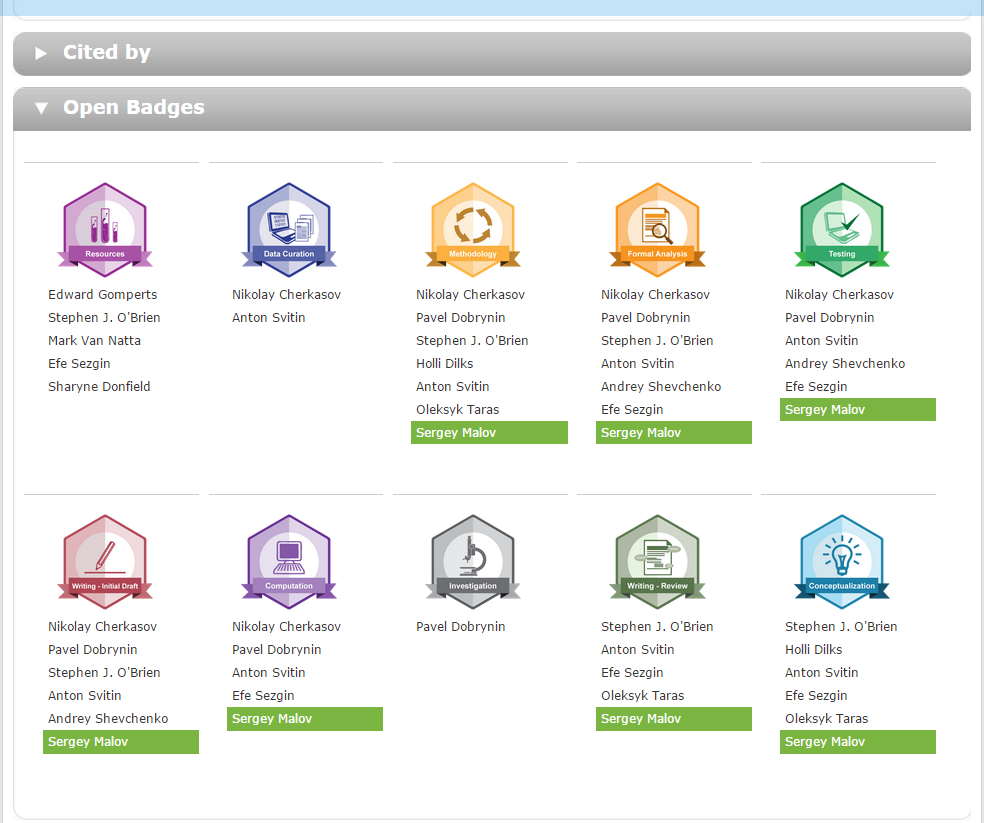Putting credit back into the hands of researchers
Today, GigaScience launched a project providing an alternative way to give authors credit for their work, contributing more to collaboration, transparency and better data. Amye Kenall tells us more about what this is and how it works.
There is a clear need for better transparency and credit around authorship. In the current system researchers are evaluated by publications and the Impact Factor of journals in which they appear.
The ‘level of credit’ awarded to authors is largely based on the order of those authors. If you’ve ever described this system to people outside of research, it’s glaringly obvious that the system is broken.
As author lists continue to grow with greater collaboration within research, the inadequacy of the system becomes even more apparent. An alternative is needed. Greater clarity to authorship could not only provide a new set of more meaningful data on which to base credit but also contribute to more collaboration, transparency and better data on which to base hiring decisions.
Today in GigaScience we launch a project to spearhead this through our Author Contributorship Badges.
Today in GigaScience we launch a project to spearhead this through our Author Contributorship Badges. The badges are based on a taxonomy around contributorship developed by the Wellcome Trust, MIT, Digital Science, and others in partnership with CASRAI (Consortia Advancing Standards in Research Administration), National Information Standards Organization (NISO), and the research community.
Project Credit sets 14 types of contributorship from writing and data visualization to data curation and project management. (You can read more about this project and its other implementations here).
Working with Mozilla Science Lab, ORCiD, and Ubiquity Press, we have developed an open source system for generating transparent, validated data around contributorship through the Mozilla Open Badge Framework.
When authors publish a manuscript with GigaScience, they will receive an email offering them the opportunity to ‘claim’ their contributorship badges for that article. The author will then follow a unique link to PaperBadger, log in with his or her ORCiD, and using the taxonomy, indicate the ways in which the author contributed.
These badges will then appear on the article as well as on the author’s ORCiD page. It’s important to note these badges are not an image alone; they’re JSON packages containing metadata validating the badge.
You can find a live example of this badging at work in our GWATCH article, as a Technical Note describing software and test data (with snapshots of code in our GigaDB database) nicely demonstrating all of the different roles. You can also find examples at our partner Ubiquity Press.
We hope these badges will serve as much more than an image on an article. To be truly useful to the researcher, we want funders, universities, and researchers to use this data to evaluate the real skills a researcher brings to a project or a department and to spur new collaborations between researchers.
These contributorship badges, in conjunction with other badges around open practices, put credit back into the hands of researchers and offer funders and universities alternative data to obscure author lists and Impact Factors.
From the beginning this has been a community developed project and it continues to be one. We’d love to hear your feedback. Contact me (amye.kenall@biomedcentral.com) or use the commenting function below to get in touch.
Recent comments
Comments are closed.


Research today has become much more collaborative in nature. With multi-author papers being the order of the day and ‘kilo-authorship’ also on the rise, this step was much required. While collaboration should definitely be encouraged, it is essential to be transparent when it comes to giving credit. This step will definitely ensure that authors who contributed significantly receive the credit for their hard work. Such innovative solutions are necessary to cope with the new problems that are an inevitable part of the changing research landscape.
It is a great opportunity for researchers to find data to support their work and a good chance for multidisciplinary aproach to scientific build up